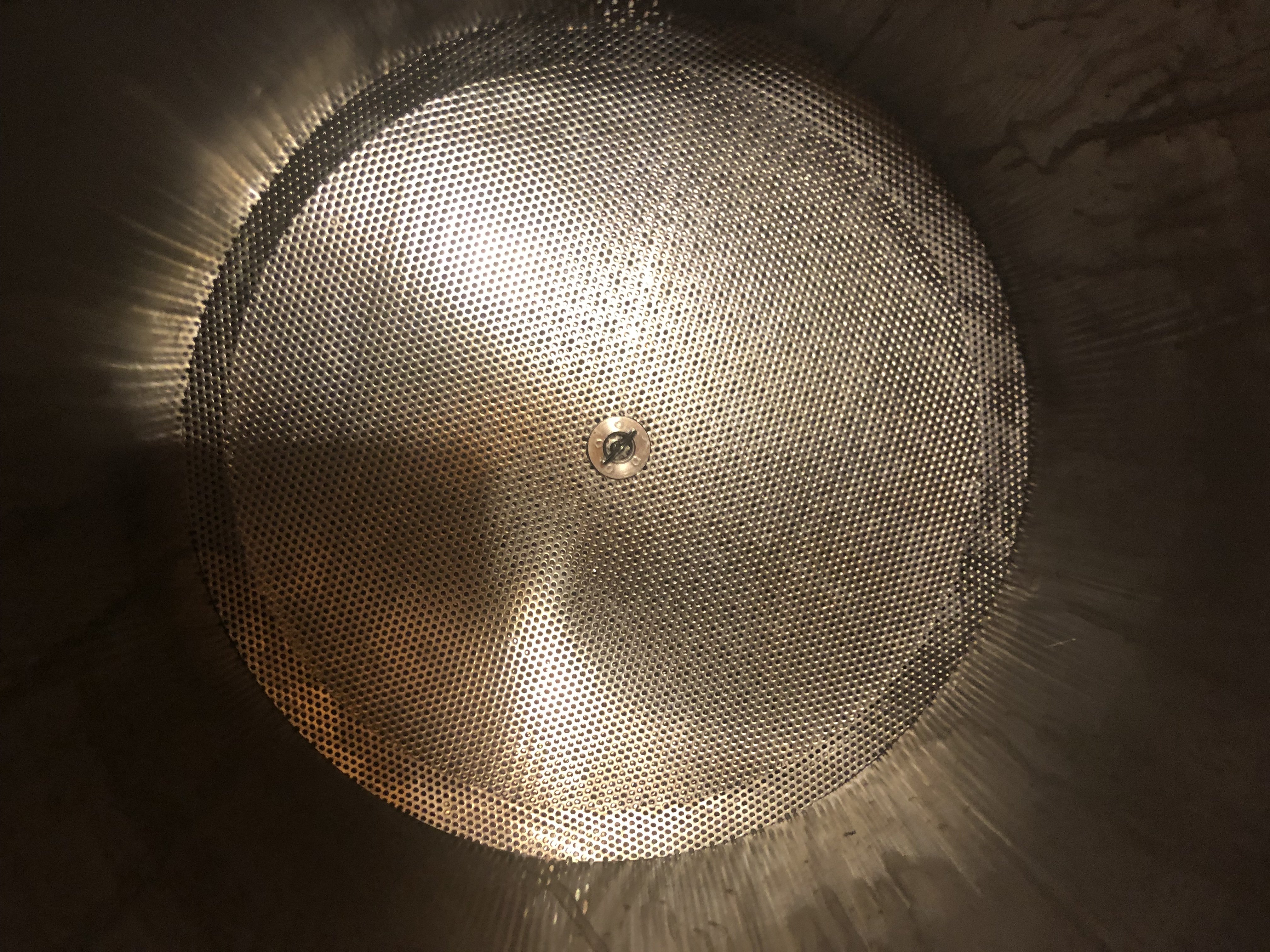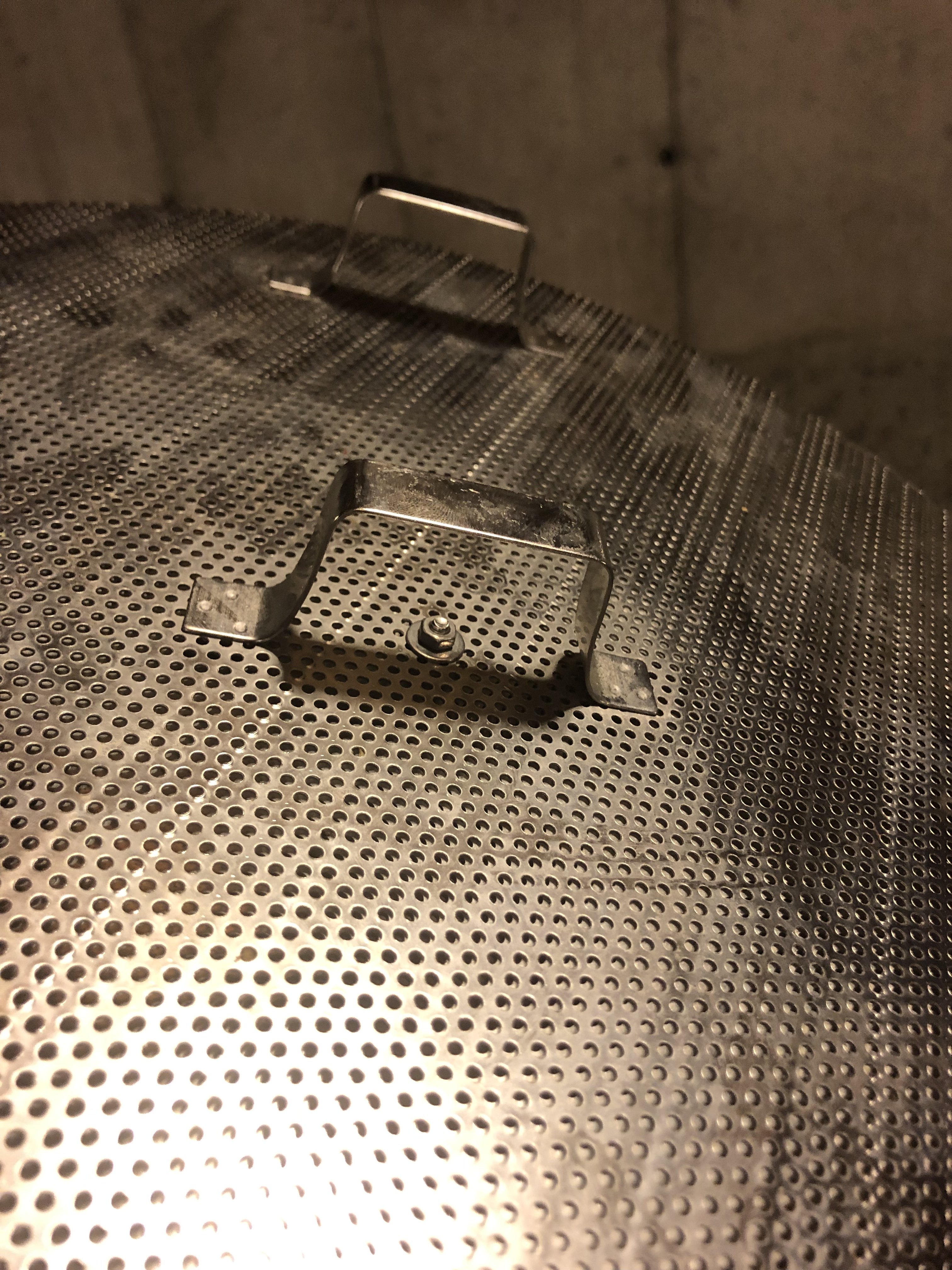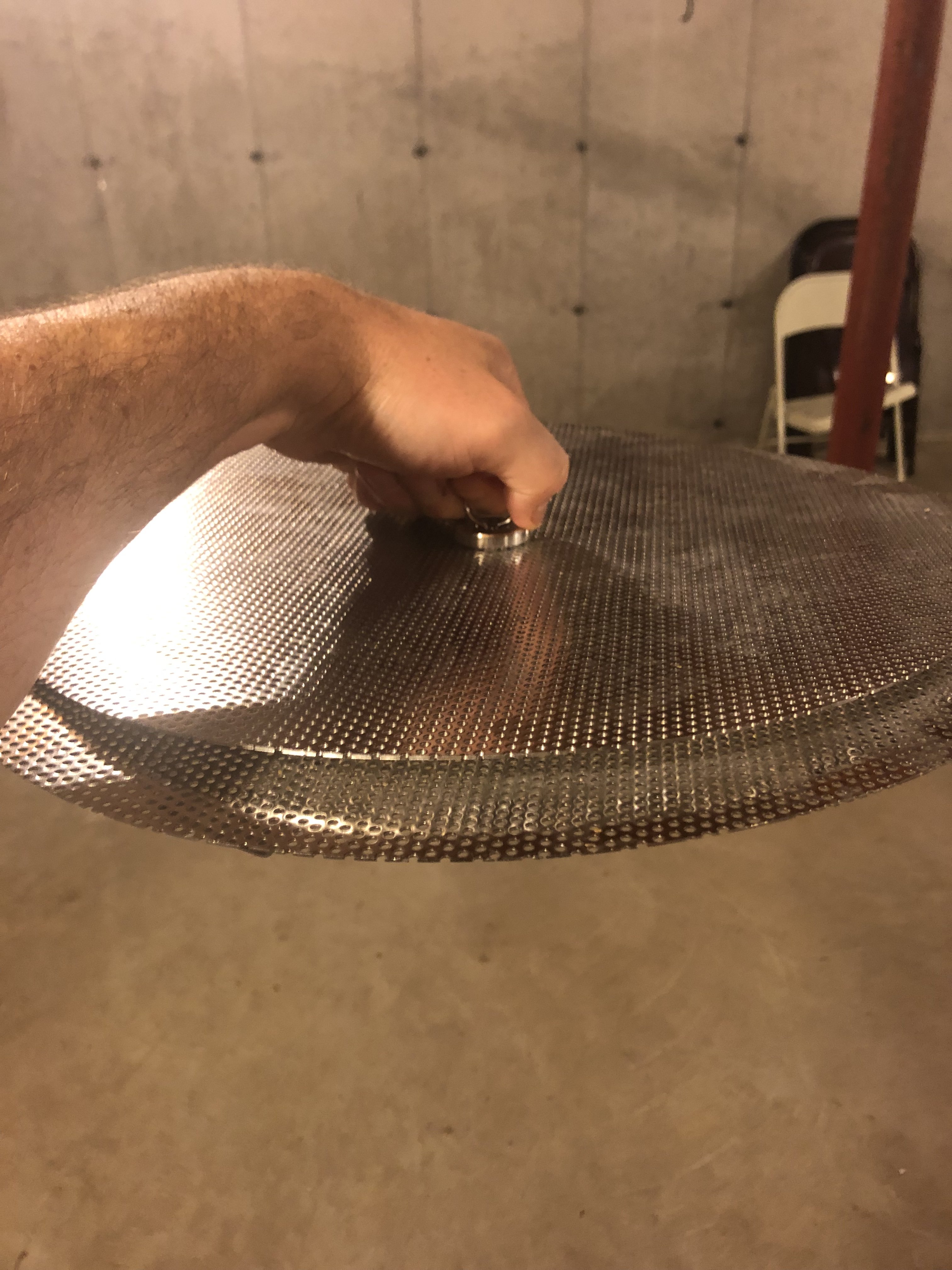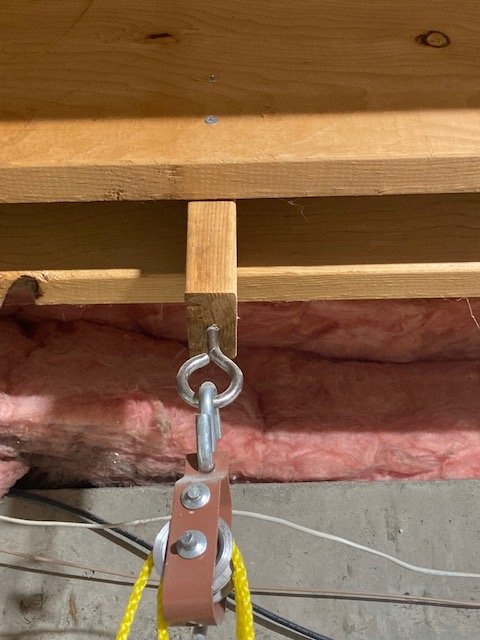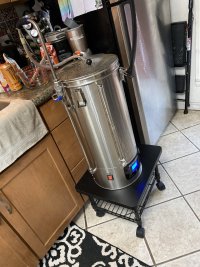Wetter definitely better, good fine crush helps as you recognise, you'll need to dial that in.
I'm using a bigger unit 70 litre but for a 25 litre to fermenter I'm using 3litres per kg. I'm losing 0.65 litre per kg in absorption.
My unit stands on the floor so via a pipe from the water heater and sprinkle to sparge.
As you've ordered a gen 4 I believe the controls are higher than earlier models so no need to bend to floor to read the controls and adjust. So stand it on the floor.
I brew in my laundry and have an extractor in the wall, this could not cope with the steam production. Having the door to outside didn't help much either.
I built a condenser not too complex really, completely removed the liquid on walls ceiling floor from condensation of open boiling. Other advantages less power to boil, less boil off loss as well.
Bigger extractor fans are noisy, condensation occurs in them and they drip. Also if your kettle on floor you need a low extractor. Have a look at the boil kettle condenser thread.
Others will have different opinions about these issues.

































![Craft A Brew - Safale S-04 Dry Yeast - Fermentis - English Ale Dry Yeast - For English and American Ales and Hard Apple Ciders - Ingredients for Home Brewing - Beer Making Supplies - [1 Pack]](https://m.media-amazon.com/images/I/41fVGNh6JfL._SL500_.jpg)














